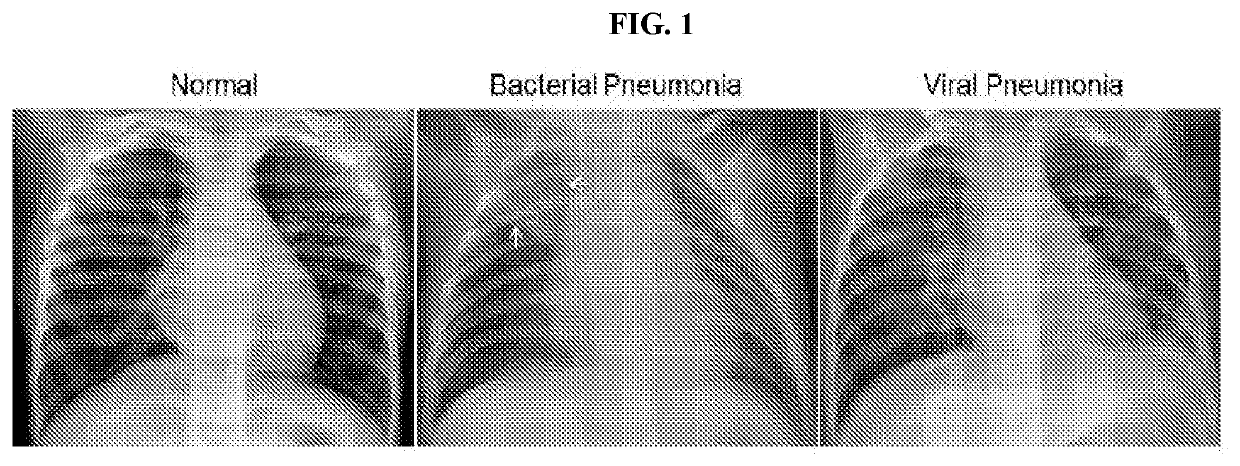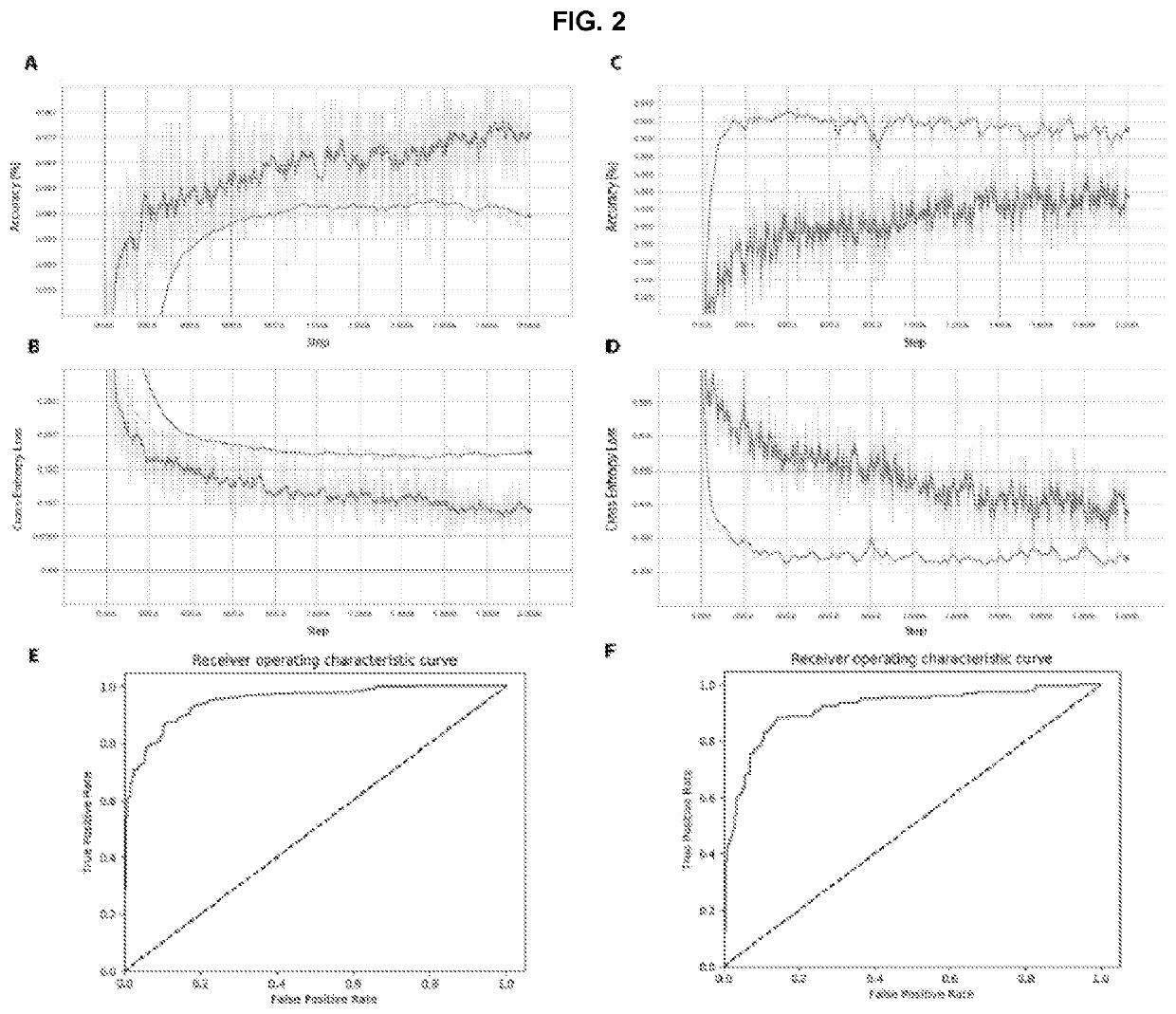Deep learning-based diagnosis and referral of diseases and disorders
a deep learning and diagnosis technology, applied in the field of deep learning-based diagnosis and referral of diseases and disorders, can solve the problems of inability to adequately perform image analysis without significant human intervention, creation and refinement of multiple classifiers required considerable expertise and time, and achieve the effect of effective image analysis and/or diagnosis, less computational power, and improved speed, efficiency and computational power
- Summary
- Abstract
- Description
- Claims
- Application Information
AI Technical Summary
Benefits of technology
Problems solved by technology
Method used
Image
Examples
example 1
[0082]To investigate the generalizability of the AI system in the diagnosis of common diseases, the same transfer learning framework was applied to the diagnosis of pediatric pneumonia. Pneumonia is the leading cause of childhood mortality worldwide. Effective (and often lifesaving) treatment depends on timely and accurate diagnosis, particularly for bacterial pneumonia which necessitates urgent antibiotic treatment. Chest radiographs are often a key component in the diagnosis of pneumonia. A total of 5,232 chest x-ray images from children were collected and labeled, including 3,883 characterized as depicting pneumonia (2,538 bacterial and 1,345 viral) and 1,349 normal from 5,856 patients, to train the AI system. The model was then tested with 234 normal images and 390 pneumonia images (242 bacterial and 148 viral) from 624 patients. After 100 epochs (iterations through the entire dataset) of the model, the training was stopped due to the absence of further improvement in both loss ...
PUM
 Login to View More
Login to View More Abstract
Description
Claims
Application Information
 Login to View More
Login to View More - R&D
- Intellectual Property
- Life Sciences
- Materials
- Tech Scout
- Unparalleled Data Quality
- Higher Quality Content
- 60% Fewer Hallucinations
Browse by: Latest US Patents, China's latest patents, Technical Efficacy Thesaurus, Application Domain, Technology Topic, Popular Technical Reports.
© 2025 PatSnap. All rights reserved.Legal|Privacy policy|Modern Slavery Act Transparency Statement|Sitemap|About US| Contact US: help@patsnap.com


